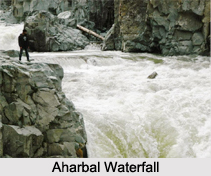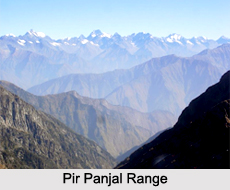 Kulgam in Kulgam District of Jammu and Kashmir is a town and a notified area committee in Jammu and Kashmir.
Kulgam in Kulgam District of Jammu and Kashmir is a town and a notified area committee in Jammu and Kashmir.
Location of Kulgam
Kulgam is located at 33 degree 38 minutes and 24 seconds North to 75 degree 01 minutes and 12 seconds East.
Naming of Kulgam
Kulgam is known for a famous religious saint (Sayed Simnan Sahib), who gave it the name "Kulgam" ("Kul" means "clan" in Sanskrit; "gram" in Sanskrit means "village"), because he lost something in the stream.
History of Kulgam
History of Kulgam is closely associated with the life of a medieval saint Sayed Simnan Sahib. Syed Simnan came from a place called Simnan in Iran. Travelling in the Kashmir valley, Sayed Simnan Sahib came to Kulgam and liked the spot on a cliff overlooking the river Veshaw. He made Kulgam his permanent abode and was buried at the very spot which he had found fascinating. His aastan is a great draw from the population in and around Kulgam. The family of Syed Simnan is buried in a nearby village called Amun. Both the shrines have a masonry plinth and a wooden superstructure of high- quality deodars. Sayed Simnan Sahib was known for his mystical powers and had devotees amongst Muslims as well as Hindus.
Geography of Kulgam
Kulgam has an average elevation of 1739 metres (5705 feet). Now it has become a separate district of Jammu and Kashmir.
Tourism in Kulgam
 Kulgam is a picturesque place nestling on the bank of river Veshaw across the wide spread of which is the foothills of the great Pir Panjal Range. Ahrabal is a scenic place to visit in Kulgam it has meadows and a scenic waterfall. It has its origin from a spring called Kounser Naag located in the mountain range of Pir Panjal. Kulgam has an archaeological site in a nearby village called Kutbal which has yielded signs of having been home to a first-century civilization as some rare artefacts belonging to the period of Kushana kings appeared in Kulgam district. The plateau of Kutbal was once considered a scenic city in the Kushan period. The magnificent stamped tiles, which were excavated from the site, indicated the taste and living standard of the people of first century AD. These excavations speak much of high culture, civic sense, social norms and art of the people living in first century AD. The Kutbal and its findings, which belong to the Kushana period, are more significant in view of several religious and artistic practices that had flourished then and had travelled to far off places in the subcontinent. Further excavation has been stopped due to prevailing political unrest in valley and is believed that further findings will reveal magnificent history of Kashmir.
Kulgam is a picturesque place nestling on the bank of river Veshaw across the wide spread of which is the foothills of the great Pir Panjal Range. Ahrabal is a scenic place to visit in Kulgam it has meadows and a scenic waterfall. It has its origin from a spring called Kounser Naag located in the mountain range of Pir Panjal. Kulgam has an archaeological site in a nearby village called Kutbal which has yielded signs of having been home to a first-century civilization as some rare artefacts belonging to the period of Kushana kings appeared in Kulgam district. The plateau of Kutbal was once considered a scenic city in the Kushan period. The magnificent stamped tiles, which were excavated from the site, indicated the taste and living standard of the people of first century AD. These excavations speak much of high culture, civic sense, social norms and art of the people living in first century AD. The Kutbal and its findings, which belong to the Kushana period, are more significant in view of several religious and artistic practices that had flourished then and had travelled to far off places in the subcontinent. Further excavation has been stopped due to prevailing political unrest in valley and is believed that further findings will reveal magnificent history of Kashmir.
Related Articles
Cities of Jammu and Kashmir
Tourism In Jammu And Kashmir
Jammu and Kashmir
Sonamarg
Costumes of Jammu and Kashmir
Srinagar
Srinagar District
Tourism In Srinagar
History of Srinagar



















